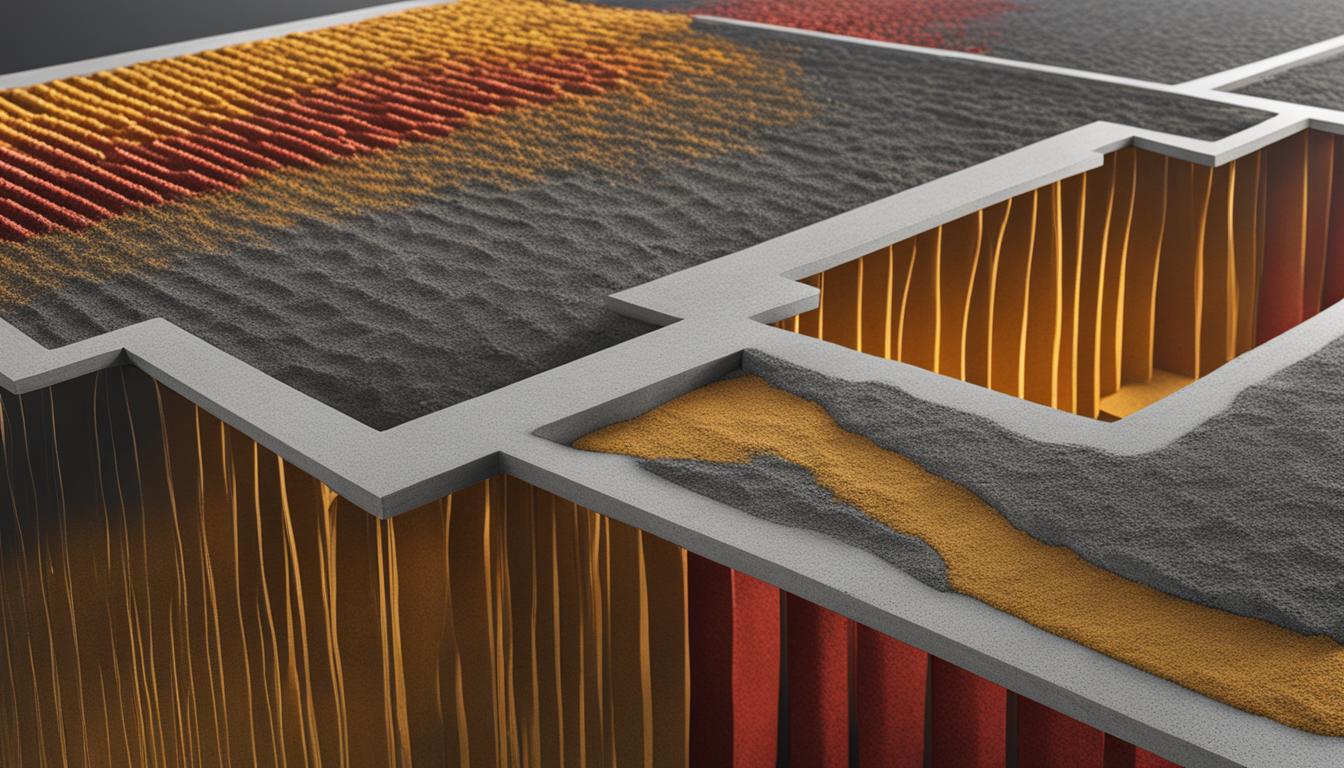Are you looking for a convenient and cost-effective way to stay connected while in Spain? Look no further! With Ringflow, you can get your free Spain phone number today and enjoy seamless communication wherever you are. Whether you’re a traveller, an expat, or a business owner, having a virtual Spain phone number can make all the difference in staying connected with friends, family, and customers.
Ringflow offers a hassle-free process to obtain your free Spain phone number online. Simply choose your desired area code and number, and it will be instantly activated. No complex procedures or waiting times are involved. Stay connected and make the most out of your time in Spain with Ringflow!
Key Takeaways:
- Ringflow offers free Spain phone numbers for seamless communication.
- A virtual Spain phone number helps establish a local presence and avoid international calling fees.
- Ringflow provides reliable and secure service as a Spain phone number provider.
- The online process of getting a free Spain phone number is quick and easy.
- Stay connected and make the most out of your time in Spain with Ringflow!
The Benefits of a Free Spain Phone Number
Having a free Spain phone number from Ringflow comes with various advantages. Firstly, it allows you to establish a local presence in Spain, making it easier for locals to contact you. Whether you are a business looking to expand your customer base or an individual staying connected with friends and family, a free Spain phone number provides seamless communication.
By getting a free Spain phone number, you can also avoid international calling fees. This is especially beneficial for businesses that frequently make or receive calls from Spain. With Ringflow as your Spain phone number provider, you can enjoy reliable and affordable communication without breaking the bank.
Ringflow offers a secure and trustworthy service, ensuring uninterrupted connectivity. Their free Spain phone number service is available 24/7, allowing you to stay connected anywhere, anytime. Whether you are travelling, working remotely, or simply need a temporary phone number for verification purposes, Ringflow has you covered.
| Benefits of a Free Spain Phone Number |
|---|
| Establish a local presence in Spain |
| Avoid international calling fees |
| Reliable and secure service |
| 24/7 availability for uninterrupted connectivity |
| Convenient for travellers, remote workers, and verification purposes |
With the benefits of a free Spain phone number from Ringflow, you can stay connected and enjoy hassle-free communication. Make the most out of your international connections and expand your reach with a reliable Spain phone number.
Ensuring Connectivity Anywhere, Anytime
In today’s increasingly connected world, staying connected no matter where you are is essential. That’s why Ringflow offers a free Spain phone number service that ensures uninterrupted connectivity anywhere, anytime. Whether you’re travelling, working remotely, or simply need a temporary phone number for verification purposes, Ringflow has you covered.
With Ringflow’s free Spain phone number service, you can easily stay connected even when you’re on the go. Their reliable and secure service is available 24/7, allowing you to make and receive calls, send and receive messages, and access important information whenever you need it.
Whether you’re a business owner looking to establish a local presence in Spain or an individual who wants to stay connected with friends and family, having a Spain phone number can make a world of difference. Ringflow’s service provides you with a virtual Spain phone number, allowing you to easily connect with locals and avoid expensive international calling fees.
Additionally, if you need a phone number for verification purposes, Ringflow’s service has got you covered. Their free Spain phone number service can provide you with a temporary phone number that you can use for verification codes, ensuring that you can access the services and platforms you need without any hassle.

Benefits of Ringflow’s Free Spain Phone Number Service
| Benefits | Description |
|---|---|
| Uninterrupted Connectivity | Stay connected no matter where you are, ensuring seamless communication. |
| Avoid International Calling Fees | Establish a local presence in Spain and avoid expensive international calling fees. |
| Temporary Phone Number | Get a temporary phone number for verification purposes, ensuring easy access to services and platforms. |
| 24/7 Service | Ringflow’s service is available 24/7, allowing you to stay connected at all times. |
The Convenience of a Virtual Spain Phone Number
Virtual Spain phone numbers offer a convenient solution for individuals and businesses alike. With Ringflow, you can easily set up and manage your virtual Spain phone number online, eliminating the need for a physical SIM card or additional hardware. This makes it a cost-effective and hassle-free option for staying connected.
One of the advantages of a virtual Spain phone number is its versatility. You can use it for various purposes, such as making business calls, communicating with friends and family, or even for verification purposes. Whether you’re a frequent traveller, a remote worker, or simply need an additional phone number, a virtual Spain phone number provides the flexibility and convenience you need.
Furthermore, Ringflow offers a Spain phone number lookup service, allowing you to easily find information about a specific phone number in Spain. This can be helpful for identifying unknown callers or verifying the authenticity of a phone number before engaging in any business transactions. With Ringflow, you can enjoy the peace of mind that comes with knowing more about the phone numbers you interact with.
Benefits of a Virtual Spain Phone Number:
- Easy setup and management online
- No need for a physical SIM card or additional hardware
- Versatility for various purposes
- Convenient for travellers, remote workers, and individuals needing an additional phone number
- Spain phone number lookup service for added security and verification
| Advantages | Disadvantages |
|---|---|
| Convenience and flexibility | No physical presence or local infrastructure |
| Cost-effective solution | Potential limitations in call quality or connectivity |
| Increased privacy and security | Dependence on internet connection |
Enjoy the convenience and flexibility of a virtual Spain phone number with Ringflow. Whether you’re looking for a temporary phone number, a local presence in Spain, or additional communication options, Ringflow has you covered.

The Easy Process of Getting a Free Spain Phone Number
Getting a free Spain phone number with Ringflow is a simple and straightforward process. With just a few steps, you can have your own Spain phone number and stay connected wherever you go.
To get started, visit the Ringflow website and navigate to the free Spain phone number section. From there, you will be able to generate a Spain phone number for free. Choose your desired area code and number, and the number will be instantly activated, and ready for use.
This convenient service eliminates the need for complex procedures or lengthy waiting periods typically associated with obtaining a phone number. With Ringflow, you can get your free Spain phone number in no time, allowing you to stay connected and communicate effortlessly.
Whether you need a Spain phone number for personal or business use, Ringflow’s easy process ensures that you can obtain one quickly and hassle-free. Experience seamless communication and uninterrupted connectivity with your free Spain phone number from Ringflow.
Steps to Get a Free Spain Phone Number
| Step | Description |
|---|---|
| 1 | Visit the Ringflow website |
| 2 | Navigate to the free Spain phone number section |
| 3 | Generate a Spain phone number |
| 4 | Choose your area code and number |
| 5 | Activate your Spain phone number instantly |
With Ringflow, getting a free Spain phone number is a breeze. Stay connected and enjoy seamless communication with your own Spain phone number today!

Self-Protection and Self-Sensing Functionalities of Self-Compacted Concrete
Self-compacted concrete (SCC) with the incorporation of carbon nanotubes (CNT) and carbon microfibers (CMF) exhibits remarkable self-protection and self-sensing functionalities. These functionalities are essential for assessing the concrete’s condition and ensuring its durability. In terms of self-protection, the addition of hybrid functional additives, such as CNT+CMF, enhances the concrete’s resistance to damage and microcracking, enhancing its overall lifespan.
To evaluate the self-diagnosis ability of functionalized SCC, measurements of electrical resistivity (ER) and piezoresistivity (PZR) are conducted in compression mode. These parameters provide valuable insights into the concrete’s structural integrity and help identify any potential issues. By leveraging the self-sensing capabilities of SCC, engineers and contractors can proactively address any emerging concerns, leading to more efficient maintenance and cost savings in the long run.
The Role of Electrical Resistivity
Electrical resistivity plays a crucial role in self-diagnosis. By monitoring changes in electrical resistivity, it is possible to detect variations within the concrete, indicating potential damage or deformation. The addition of carbon nanotubes and carbon microfibers significantly improves the concrete’s electrical conductivity, enabling more accurate and reliable self-diagnosis.

The Benefits of Self-Sensing Capabilities
Self-sensing capabilities offer several advantages for the structural integrity and maintenance of concrete. With self-sensing properties, it becomes easier to detect and assess any potential issues without relying on manual inspections or invasive methods. This proactive approach enables early detection of damage, allowing for prompt repairs and minimizing the risk of further deterioration. Moreover, the utilization of self-sensing concrete can lead to improved safety and cost-effectiveness, as the need for extensive maintenance and repairs is reduced.
| Self-Protection and Self-Sensing | Functionalities of SCC |
|---|---|
| Enhanced resistance to damage and microcracking | Improved overall lifespan of the concrete |
| Accurate self-diagnosis through electrical resistivity measurement | Proactive identification of potential issues |
| Improved structural integrity and maintenance | Reduced risk of further deterioration |
| Cost-effective and efficient maintenance | Enhanced safety and longevity of concrete structures |
Overall, self-compacted concrete with self-protection and self-sensing functionalities offers significant benefits to the construction industry. By leveraging these capabilities, engineers and contractors can ensure the longevity of concrete structures and enhance the safety and reliability of infrastructure projects.
Optimizing the Harvesting and Distribution of Energy from Renewable Sources
Rapid advancements in renewable energy systems call for the optimization of energy harvesting and distribution. To achieve this, the construction of suitable concrete infrastructure is essential. Concrete, known for its durability and sustainability, proves to be an ideal material for energy infrastructures. Its robust properties make it suitable for diverse renewable energy systems such as offshore wind platforms and solar power plants. However, utilizing concrete in these applications poses challenges due to the extreme operating conditions they face.
Concrete technologies, such as self-compacted concrete, offer solutions to improve the performance and longevity of concrete infrastructure in renewable energy systems. Self-compacted concrete incorporates additives like carbon nanotubes and carbon microfibers, enhancing the self-protection of the concrete and reducing damage and microcracking. By utilizing self-compacted concrete, the integrity and reliability of renewable energy infrastructures can be optimized.
By embracing concrete technologies and optimizing the construction of concrete infrastructure, we can enhance the efficiency and sustainability of renewable energy systems. This ensures a reliable and long-lasting energy supply while minimizing the impact on the environment. As the world continues to transition towards clean energy sources, the role of concrete in supporting and optimizing renewable energy systems becomes increasingly crucial.
The Role of Self-Compacted Concrete
Self-compacted concrete offers several advantages in the optimization of renewable energy systems. Its self-sensing capabilities enable real-time monitoring of concrete conditions, providing valuable insights into the performance and maintenance needs of the infrastructure. By incorporating self-diagnosis features such as electrical resistivity and piezoresistivity, self-compacted concrete ensures the early detection of potential issues, allowing for timely interventions and preventive measures.
Furthermore, self-compacted concrete enhances the durability and stability of renewable energy systems by mitigating the effects of extreme operating conditions. It can withstand high temperatures, cyclic thermal loads, and other environmental challenges, ensuring the structural integrity of the concrete infrastructure. Its self-protection properties significantly reduce the risk of damage, increasing the overall efficiency and lifespan of the renewable energy system.
| Advantages of Self-Compacted Concrete in Renewable Energy Systems | Benefits |
|---|---|
| Enhanced self-protection | Reduces damage and microcracking |
| Improved durability | Withstands high temperatures and cyclic thermal loads |
| Real-time monitoring | Enables early detection and preventive maintenance |
| Longevity | Increases the lifespan of renewable energy infrastructures |

Concrete for Solar Energy Applications
Concrete plays a crucial role in solar energy applications, such as solar thermal electricity (STE) and concentrated solar power plants (CSP). The use of concrete in these applications is essential due to its ability to withstand high temperatures and cyclic thermal loads. However, the performance and durability of concrete in extreme operating conditions, including long-term cyclic thermal fatigue, require further research and development.
To improve the thermal performance and durability of concrete in solar energy applications, advanced concrete technologies are being explored. One such technology is self-compacted concrete (SCC), which offers enhanced self-protection capabilities. Additionally, the incorporation of additives like carbon fibres and carbon nanotubes (CNT) shows promise in further improving the thermal performance of concrete.

In order to assess the performance of concrete in solar energy applications, extensive research is needed. This includes studying the behaviour of concrete under high temperatures, cyclic thermal loads, and long-term exposure to weather conditions. By understanding the challenges and limitations of concrete in these applications, we can develop innovative solutions to optimize its performance and contribute to the advancement of solar energy technology.
Comparison of Concrete Performance in Solar Energy Applications
| Concrete Type | High-Temperature Resistance | Cyclic Thermal Fatigue Resistance | Long-Term Durability |
|---|---|---|---|
| Conventional Concrete | Limited | Poor | Prone to degradation |
| Self-Compacted Concrete (SCC) | Improved | Enhanced | Increased longevity |
| Concrete with Carbon Fibers and CNT | High resistance | Improved performance | Extended service life |
By integrating advanced concrete technologies and conducting thorough research on concrete performance, we can ensure the reliability and longevity of solar energy infrastructures. This will contribute to the growth and sustainability of the solar energy industry, enabling us to harness the power of the sun for a cleaner and greener future.
Thermal Fatigue and Resistance of Concrete
Concrete exposed to high temperatures can undergo physico-chemical changes, leading to dehydration and cracking. However, the addition of certain additives can enhance the resistance of concrete to thermal fatigue, ensuring its durability and longevity. One such additive is fibre reinforcement, which includes materials like polypropylene fibres (PPF) and carbon fibres (CF). These fibres improve the overall performance of the concrete, making it more resilient to thermal stress.
To assess the effectiveness of fiber-reinforced concrete (FRC), research is ongoing to explore the use of carbon nanotubes (CNT) and carbon microfibers (CMF) as additional additives. These hybrid functional additives show promise in enhancing the self-protection and self-sensing capabilities of concrete, further improving its resistance to thermal fatigue and spalling. By incorporating these additives into FRC, it is possible to create a concrete material that can withstand cyclic heat load conditions and reduce the occurrence of microcracking.
Fiber Reinforced Concrete for Thermal Fatigue Resistance
| Concrete Mix | Thermal Fatigue Resistance |
|---|---|
| Plain Concrete | Low |
| Fiber Reinforced Concrete (PPF) | Moderate |
| Fiber Reinforced Concrete (PPF + CF) | High |
| Fiber Reinforced Concrete (PPF + CNT + CMF) | Very High |
In the table above, it is evident that fiber-reinforced concrete, particularly when combined with carbon nanotubes and carbon microfibers, exhibits significantly higher thermal fatigue resistance compared to plain concrete. The incorporation of these additives enhances the overall durability and performance of the concrete, making it a suitable choice for applications where thermal stress is a concern.
Further research is still required to fully understand the behaviour of fiber-reinforced concrete with carbon nanotubes and carbon microfibers in cyclic heat load conditions. However, the potential of these materials to improve the thermal performance and resistance of concrete is promising. By continuing to explore and innovate in this field, we can develop concrete materials that are better equipped to withstand the challenges of thermal fatigue, ensuring the longevity and reliability of our infrastructure.
Self-Sensing Properties of Cementitious Materials
Cementitious materials, such as concrete, possess unique self-sensing properties that can be harnessed for various applications. Through changes in electrical resistivity, these materials can provide real-time information about their structural health and integrity. By incorporating conductive additives like carbon black, carbon nanotubes, and carbon fibres, the self-diagnostic capabilities of cementitious materials are enhanced.

Electrical resistivity measurement is a commonly used method to assess self-sensing in cementitious materials. It involves measuring the material’s resistance to electric current flow, which can indicate changes in its internal structure or properties. Additionally, piezoresistivity analysis is utilized to evaluate the response of cementitious materials to mechanical stress. This helps in detecting any deformations or damages that may occur under load.
Applications of Self-Sensing Cementitious Materials
- Structural Health Monitoring: Self-sensing cementitious materials can be used in the construction of buildings, bridges, and other infrastructure to monitor their structural health. By continuously measuring the electrical resistivity or piezoresistivity of the material, potential issues such as cracks or strain can be detected early, allowing for timely maintenance or repairs.
- Smart Concrete: The integration of self-sensing properties into concrete can enable the development of smart structures. These structures can self-monitor their condition, send real-time data to a centralized system, and even activate self-healing mechanisms in response to detected damages.
- Environmental Monitoring: Self-sensing cementitious materials can also be utilized in environmental monitoring applications. By embedding sensors within the material, changes in electrical resistivity or piezoresistivity can be used to detect environmental factors like temperature, humidity, or pollutant levels.
Limitations and Future Research
Although self-sensing cementitious materials show promising potential, there are still some limitations and challenges that need to be addressed. One challenge is the heterogeneous nature of concrete, which can affect the sensitivity of the self-sensing properties. Further research is needed to optimize the performance of self-sensing assessments in concrete, particularly in mortar and concrete structures where the presence of aggregates can hinder electrical current transfer.
Additionally, the conductivity mechanisms in self-sensing cementitious materials are complex and require further investigation. Understanding the interplay between ionic conductivity, electronic conduction, and tunnelling can lead to the development of more efficient and reliable self-sensing materials.
| Advantages | Challenges |
|---|---|
| – Real-time monitoring of structural health | – Heterogeneous nature of concrete |
| – Early detection of damages | – Complex conductivity mechanisms |
| – Potential for self-healing structures | – Optimization in mortar and concrete |
| – Environmental monitoring capabilities |
Challenges of Conducting Self-Sensing Assessments in Concrete
When it comes to assessing self-sensing capabilities in concrete, there are several challenges that researchers and engineers must overcome. While most studies have focused on cement paste, there is a lack of research in mortar and concrete, which are more representative of real-world applications. The composite structure of concrete, with its coarse and fine aggregates, poses a challenge to obtaining accurate and sensitive piezoresistivity measurements.
One of the main challenges is the conductivity of common aggregates compared to the more conductive cement paste. Aggregates are typically less conductive, which can hinder the transfer of electrical current and affect the sensitivity of self-sensing measurements. This issue requires further investigation and potential modifications to improve the performance of self-sensing assessments in concrete.
Despite these challenges, researchers are actively working towards enhancing the self-sensing capabilities of concrete. Ongoing research aims to better understand the behaviour of self-sensing concrete in real-world conditions, including long-term cyclic heat loads and extreme environments. By addressing these challenges, the field of self-sensing concrete can continue to advance and provide valuable insights for the development of durable and efficient infrastructure.
Challenges of Conducting Self-Sensing Assessments in Concrete
| Challenges | Description |
|---|---|
| Limited studies in mortar and concrete | Most self-sensing assessments have been conducted in cement paste, with limited research in mortar and concrete, which are more representative of real-world applications. |
| Effect of aggregates | The composite structure of concrete, with its coarse and fine aggregates, affects the sensitivity of piezoresistivity measurements due to the lower conductivity of aggregates compared to cement paste. |
| Hindrance to electrical current transfer | Common aggregates, being less conductive, can hinder the transfer of electrical current, impacting the accuracy and reliability of self-sensing assessments. |
Despite these challenges, ongoing research and advancements in self-sensing concrete technology are paving the way for more accurate and reliable assessments. By addressing the conductivity issues related to aggregates and expanding studies to include mortar and concrete, researchers can unlock the full potential of self-sensing capabilities in practical applications. This progress will contribute to the development of more resilient and sustainable infrastructure for the future.
Extending the Service Life of Heat Storage Infrastructures
When it comes to renewable energy systems, ensuring the longevity and durability of heat storage infrastructures is crucial. These infrastructures play a key role in storing and distributing energy generated from renewable sources, contributing to a more sustainable future. To extend the service life of these heat storage infrastructures, advanced concrete technologies, such as self-compacted concrete with hybrid functional additives, have proven to be highly effective.
Self-compacted concrete (SCC) with hybrid functional additives offers self-protection and improved performance, making it an ideal choice for heat storage infrastructures. The incorporation of additives like carbon nanotubes (CNT) and carbon microfibers (CMF) enhances the self-protection properties of the concrete, reducing damage and microcracking. This ensures the infrastructure’s stability and durability even in high and cyclic operative temperatures.
By implementing self-compacted concrete with hybrid functional additives, we can ensure that heat storage infrastructures in renewable energy systems are capable of withstanding the demanding conditions they are subjected to. This not only extends their service life but also enhances their overall performance. The use of durable and stable concrete in these infrastructures is crucial for the reliable and efficient storage and distribution of energy from renewable sources.
Comparing the Performance of Heat Storage Infrastructures
| Concrete Type | Durability | Stability | Resistance to High Temperatures |
|---|---|---|---|
| Traditional Concrete | Lower durability | Less stable | More susceptible to cracking |
| Self-Compacted Concrete with Hybrid Functional Additives | Higher durability | Enhanced stability | Improved resistance to high temperatures |
As the demand for renewable energy systems continues to grow, it is essential to prioritize the development and implementation of advanced concrete technologies. By extending the service life of heat storage infrastructures, we can ensure the reliable and efficient storage and distribution of energy from renewable sources, ultimately contributing to a more sustainable future.

With Ringflow, we are dedicated to providing solutions for staying connected and ensuring the longevity of renewable energy systems. By embracing advanced concrete technologies, such as self-compacted concrete with self-sensing capabilities, we can address the communication and infrastructure needs of individuals and businesses while contributing to a sustainable future.
Conclusion
At Ringflow, we understand the importance of staying connected in today’s fast-paced world. That’s why we offer a range of solutions to meet your communication needs. With our free Spain phone numbers, you can easily establish a local presence and ensure seamless connectivity, no matter where you are. Whether you need a virtual Spain phone number for business or personal use, our reliable and secure service has got you covered.
But our offerings go beyond just communication. We also specialize in concrete technologies that contribute to a sustainable future. Our self-compacted concrete with self-sensing capabilities provides enhanced durability and performance for renewable energy systems. By embracing these technologies, we can ensure the longevity of heat storage infrastructures and optimize the harvesting and distribution of energy from renewable sources.
At Ringflow, we are committed to providing innovative solutions that meet the evolving needs of individuals and businesses. Whether it’s a free Spain phone number or advanced concrete technologies, we strive to empower our customers and create a better tomorrow. Join us on this journey towards a more connected and sustainable future.




